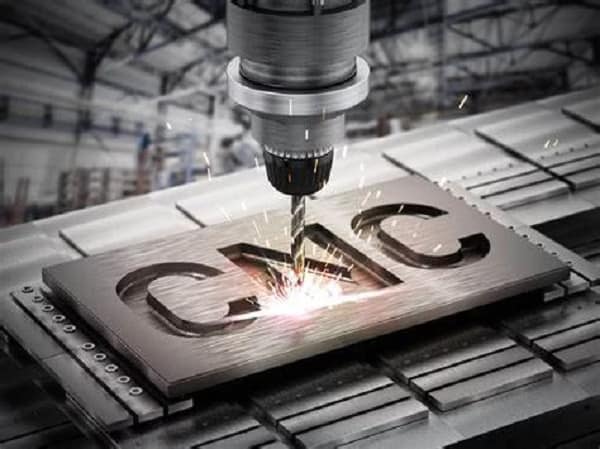CNC milling has transformed modern machining, enabling manufacturers to produce complex parts with incredible accuracy. Whether you’re in aerospace, automotive, or medical manufacturing, CNC milling is a critical technology that ensures consistency, speed, and innovation. In this article, we’ll dive into the fundamentals of CNC milling, how it works, its benefits, and its impact on various industries.

What is التفريز باستخدام الحاسب الآلي الرقمي?
CNC milling is a subtractive manufacturing process that uses computer-controlled rotary cutters to remove material from a workpiece. Unlike traditional manual milling, CNC milling automates the entire process, allowing for intricate designs and highly accurate results.
The CNC Milling Process
The CNC milling process consists of several key steps:
- CAD Design – Engineers create a 3D model of the desired part.
- CAM Processing – The CAD file is converted into G-code, which provides instructions for the CNC machine.
- Material Setup – The raw material is clamped onto the machine’s worktable.
- Milling Execution – The spindle rotates the cutting tool, removing material layer by layer.
- Final Inspection – Quality control ensures the part meets required specifications.
Types of CNC Milling Operations
- Face Milling – Cutting a flat surface on the workpiece.
- Peripheral Milling – Machining along the edges of a workpiece.
- Slot Milling – Creating narrow channels or grooves.
- Drilling & Boring – Precision hole-making operations.
- Thread Milling – Cutting screw threads with high accuracy.
Why CNC Milling is Essential
- Unmatched Precision – CNC milling can achieve tolerances as tight as ±0.001 inches.
- Repeatability – Every part produced is identical, reducing errors.
- Speed & Efficiency – Automates complex machining, cutting production time significantly.
- Versatility – Works with various materials, from metals to plastics.
- Reduced Waste – Optimized cutting paths minimize material usage.
Industries That Rely on CNC Milling
- Aerospace – Producing lightweight yet strong aircraft components.
- Automotive – Machining engine parts and transmission components.
- Medical – Manufacturing prosthetics and surgical instruments with high precision.
- Defense & Military – Creating complex weapons systems and vehicle parts.
- Consumer Goods – Producing custom-designed items, from electronics to furniture.
How to Optimize CNC Milling for Maximum Efficiency
- Choose the Right Tooling – Select carbide or coated tools for durability.
- Optimize Cutting Speed & Feed Rate – Adjust parameters to balance speed and precision.
- Use Advanced CNC Software – Leverage AI-powered CAM software for smarter machining.
- Implement Preventative Maintenance – Regular servicing keeps machines running smoothly.
- Utilize Multi-Axis Machining – 5-axis CNC milling allows for complex geometries in a single setup.
The Future of CNC Milling
CNC milling is evolving with the integration of automation, AI, and real-time data analytics. Smart factories are using CNC machines with IoT connectivity, enabling predictive maintenance and remote monitoring. As 3D printing and hybrid manufacturing techniques advance, CNC milling will continue to play a vital role in high-precision machining.
الخاتمة
CNC milling is a cornerstone of modern manufacturing, offering unmatched precision, efficiency, and flexibility. Whether you’re producing aerospace components, medical devices, or custom prototypes, CNC milling ensures high-quality results with minimal waste. As technology advances, CNC milling will become even more powerful, driving innovation across industries.